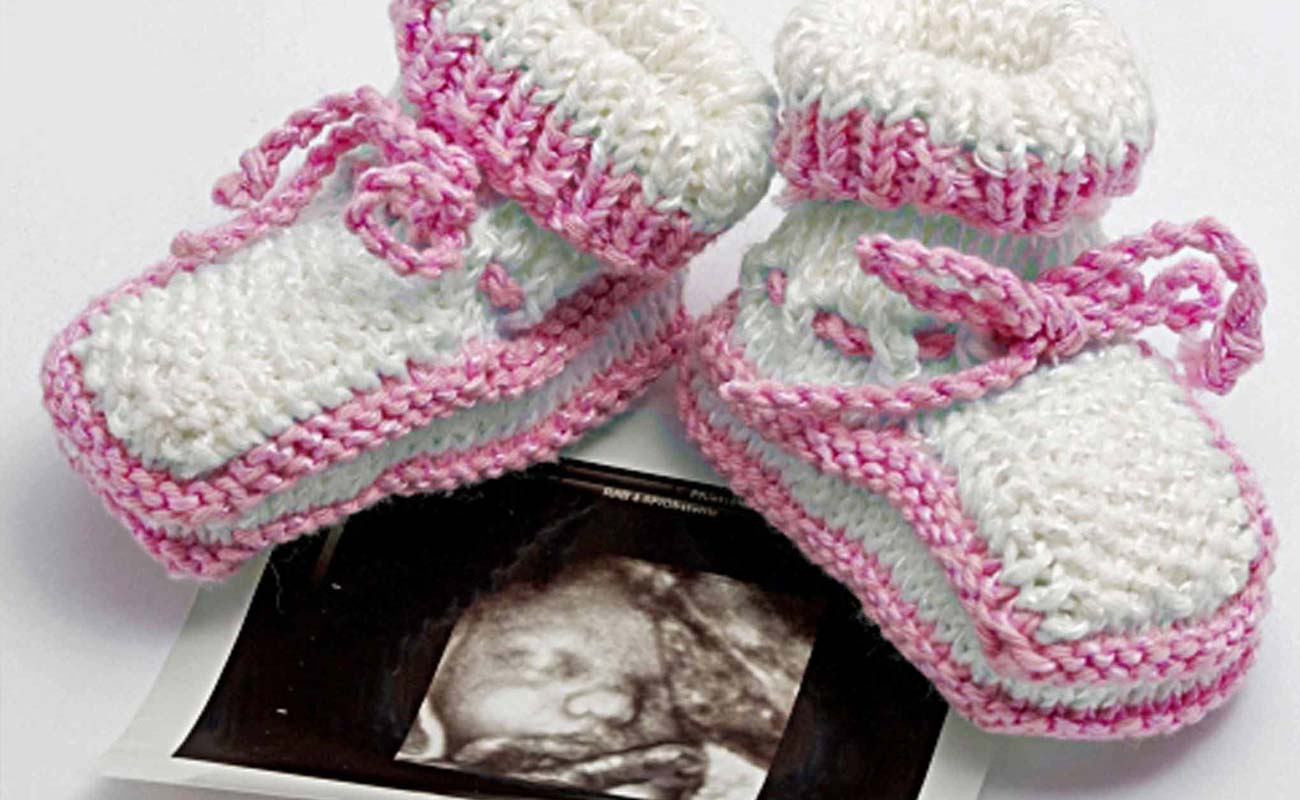When a baby dies in utero at 20 weeks of pregnancy or later, it's called a stillbirth. (When a pregnancy is lost before 20 weeks, it's called a miscarriage.) About 1 in 160 pregnancies ends in stillbirth in the United States. Most stillbirths happen before labor begins, but a small number occur during labor and delivery.

If you've recently received the heartbreaking news that your baby has died in the womb, your grief may be overwhelming. To find support, see the last section of this article or see our articles on coping with pregnancy loss and honoring a baby who dies in pregnancy.
There are usually no warnings before a stillbirth. But the following symptoms could signal a problem:
A large proportion of stillbirths seem to happen in otherwise healthy babies and the cause often can't be explained.

However, many stillbirths are linked to placental complications. This means that for some reason the placenta (the organ that links the baby's blood supply to the mother's and nourishes the baby in the womb) isn't functioning properly.
A poorly functioning placenta may be the direct cause of stillbirth, or it may contribute to it because the baby's growth has been held back.
If there have been problems with the placenta, stillborn babies are usually born perfectly formed, though often small. With more research, it's hoped that placental causes may become better understood, leading to better detection of placental problems and better care for these babies.
Other conditions that can cause stillbirth or may be associated with stillbirth include:
Around one in 10 stillbirths are caused by an infection. The most common type of infection is a bacterial infection that travels from the vagina into the womb (uterus). These bacteria include group B streptococcus, escherichia coli (E.coli), klebsiella, enterococcus, haemophilus influenza, chlamydia, and mycoplasma or ureaplasma.
Some bacterial infections, such as chlamydia and mycoplasma or ureaplasma, which are sexually transmitted infections (STIs), can be prevented using barrier contraception, such as condoms.
Other infections that can cause stillbirths include:
There are also a number of things that may increase your risk of having a stillborn baby, including:
Your midwife will check the growth and wellbeing of your baby at each antenatal appointment, and they'll plot your baby's growth on a chart to ensure he or she is continuing to grow.
Every baby is different and should grow to the size that's normal for him or her (some babies are naturally small). However, all babies should continue to grow steadily throughout the pregnancy.
If a baby is smaller than expected, or his or her growth pattern tails off as the pregnancy continues, it may be because the placenta isn't working properly. This increases the risk of stillbirth.
Problems with a baby's growth should be picked up during antenatal appointments. However, it's important to be aware of your baby's movements and let your midwife know immediately if you notice a reduction in the baby’s movements.

A pregnant mother may suspect stillbirth if she stops feeling the fetus movements inside her womb. But not feeling movement does not mean stillbirth in all cases.
Before birth, the only way to know for sure about the occurrence of stillbirth is to confirm the absence of fetal cardiac activity. This is done using ultrasound. Fetal demise is diagnosed by the absence of fetal cardiac activity while visualizing the fetal heart.
Once the diagnosis of fetal demise has been confirmed, the patient should be informed of her condition. Often, allowing the mother to see the lack of cardiac activity helps her to accept the diagnosis.
Saade and his colleagues evaluated 614 stillborn infants, comparing them to 1,816 infants delivered healthy. The study was done between March 2006 and September 2008 at 59 U.S. hospitals.
After evaluating a number of factors, they found many maternal factors associated with stillbirth. They include:
The odds of stillbirth for each risk factor ranged. Smoking during the three months before pregnancy, for instance, raised the odds about 1.5 times; previous stillbirth nearly six-fold.
Investigations into the cause of your baby’s death may help to identify any steps you can take to reduce your chance of having another stillbirth in the future. For this reason, it is best to wait for the results before trying for another baby.
Parents can, naturally, be very anxious about stillbirth happening again. Depending on the reason for your baby’s death, you may be at increased risk of having another stillbirth. However, most women do not have another stillbirth in the future. If no cause for the stillbirth was found, you’re unlikely to have another.

After a stillbirth, health care providers will try to determine why the fetus died and help the family cope with their loss. Later on, if the family wants to try for another pregnancy, providers can help the mother understand and change any problems that might increase her risk of another stillbirth. Management includes:
Delivering the Fetus
If health care providers determine that the fetus has died while it is still in the womb, the next step is to deliver it. In general, this does not have to happen right away. Some parents might need time to cope with the news of their loss or to make arrangements. Others might prefer to complete the process as soon as possible. It should be noted, when a dead fetus has been in utero for 3-4 weeks, fibrinogen levels may drop, leading to a coagulopathy. This is rarely a problem because of earlier recognition of fetal demise and delivery of the fetus.
Depending on how far along the pregnancy is and other considerations, health care providers usually will use one of these two methods to deliver the fetus:
Labor Induction. Providers will give the mother medicine to start labor. This method is used more often later in pregnancy.
Dilation and evacuation. In this surgical procedure, providers first help the woman’s cervix open, or dilate. After about a day, the cervix will have opened and providers give the woman a medicine to keep her from feeling pain. Then, they insert instruments through the vagina and cervix into the womb to remove the fetus, the placenta, and other pregnancy material. Dilation and evacuation is only an option in the second trimester.
Examining the Fetus
After a stillbirth, it is important for providers to examine the body closely. Figuring out why the stillbirth occurred, if possible, can help providers and parents understand any risks that might affect future pregnancies.
Health care providers might examine a stillborn baby in three main ways:
(i) Inspecting the exterior of the fetus, placenta, and the membranes including the cultures. Health care providers will examine the body and the tissues that surrounded and nourished the fetus inside the womb and may perform the placental cultures for suspected infection such as listeria. This examination can reveal problems that could have caused or contributed to the death. They may weigh and measure the body and placenta to look for any growth problems. The health care provider might also photograph certain parts of the body or the placenta to put in the medical record or to show to a specialist. They might take radiographs of the fetus if indicated.
(ii) Fetal karyotype. It can be obtained from a sample of amniotic fluid (preferred), fetal blood, or fetal tissue. Fetal karyotype should be considered in all cases. It is especially important if the fetus is dysmorphic, has growth retardation, is hydropic, or has anomalies or other signs of chromosomal abnormality. Chromosomal analysis should also be considered in patients with multiple pregnancy losses, especially with a history of second- and third-trimester losses or when a parent has a balanced translocation or mosaic chromosomal pattern. Many authorities (including the ACOG committee on evaluation of stillbirth) recommend obtaining this test in every fetal demise. The addition of microarray testing to traditional karyotype may be of benefit in the evaluation of these fetuses. The ability to obtain results appears to be higher as is the detection rate for abnormalities.
(iii) Autopsy of the fetus. The most important part of the workup of a fetal demise is the autopsy of the fetus. The decision to proceed with an autopsy must be made by the parents and informed consent is necessary. With parents who are resistant to the idea of a complete autopsy, a limited fetal evaluation should be discussed with the family. Although uncommon, postmortem MRIs can provide valuable information in the evaluation of a fetus when an autopsy cannot be performed.
Managing Risk Factors
In many cases of stillbirth, there are no obvious risk factors. If there are factors that might increase the risk of another stillbirth in the future, and if the mother wants to have another child, she can work together with her health care provider to attempt to control the risks before getting pregnant again.
Currently, which tests are most effective in evaluating a fetal demise have not been agreed upon. Therefore, authorities vary in their recommendations. Most of the testing recommendations in the past have been based on expert opinion rather than scientific studies. Research studies will hopefully define the optimal diagnostic evaluation for this difficult clinical problem.
Besides thorough maternal history, health care provider may advise the following tests for evaluating the fetal demise.
If investigations find that you have an underlying medical condition, such as diabetes, this may need to be treated or monitored carefully. Your obstetrician can explain how treatment will reduce your chance of having another stillbirth in the future, and any remaining risks. You may need additional treatment and check-ups if you become pregnant. You might also be recommended to have antenatal care with an obstetrician and to give birth in a specialist maternity unit.
If your baby was found to have a genetic disorder, there might be a risk that other babies you have in the future could also have it. The doctor at the hospital can offer advice and may refer you to a genetics specialist for further support and counselling. If you get pregnant in the future, you might be able to have tests during the pregnancy to check for the condition. You might also be able to have a special type of in vitro fertilisation (called preimplantation genetic diagnosis) to select an embryo without the condition.
Some causes of stillbirth, such as the cord becoming trapped, are unlikely to happen again.
A stillbirth is more likely to occur when the mother or father is older, you’re expecting twins, or the mother is obese or smokes. Be aware that your risk increases as you get older – you’re more at risk of having a stillbirth if you’re over the age of about 35. If you’re obese, losing weight and keeping a healthy weight can reduce your risk. Stopping smoking can help too.
You can also take steps to reduce your risk of getting infections, such as by having the rubella (German measles) vaccination.
babycenter.com, kidspot.com.au, webmd.boots.com, webmd.com, nhs.uk, ijogr.com, bupa.co.uk, verywell.com
Submit Comment